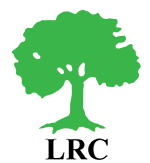Related
New settlements devour lands in Jerusalem - Beit Safafa
In the beginning of March 2022, municipality crews began carrying out excavations in the Tabalia area, to the southeast of the village of Beit Safafa, south of Jerusalem, with the aim of building a new settlement in the name of (Givat Hamatos), in continuation of the policy of Judaizing Jerusalem and its suburbs, and nibbling every meter in the land of Jerusalem for the benefit of the settlers and settling them in Jerusalem. The establishment of the Givat Hamatos settlement is one of the projects that aim to isolate Jerusalem from its southern periphery, which is linked to the city of Bethlehem. The village of Beit Safafa is surrounded from all directions by settlements, and the occupation has confiscated large areas of its land. These days, it is building a road and excavating lands for the establishment of the mentioned settlement. This land was confiscated under the pretext of absentee property.
Photos (1-5) shows the town, the road and the planned settlement.
During the excavation and dredging in Mount Beit Safafa, where the settlement will be established, an archaeological site was discovered, and from the initial viewing of this site, it can be noticed that the site is carved in the bed-rock, where there are no built walls, but the indications in the bed-rock indicate two possible functions for this site, the first is a site that was used to cut building stones. As for the second function, through some of the existing basins, it may have been used as a grape or olive press, since this type of facility is abundant in all Palestinian areas, and most of them date to the Roman period and beyond. It is also known the possibility that the archaeological site was a water facility, knowing that it is near the Jerusalem-Hebron line, which contained the water channels (aqueducts) that supplied Jerusalem with water from Hebron, in addition to that, the proximity of the place to the Monastery of Mar Elias, shed light on the function, and that the area in general was full of historical housing and various construction activities.
Photos (6-10) shows the excavation area.
According to the reports, the occupation's intention to build about 2500 settlement units in the site on an area of one dunam, which confirms the large size of the settlement, which will devour and control Beit Safafa from the eastern region. In addition to this settlement, which began to be talked about ten years ago, the occupation intends to establish another settlement to the north of the village, called Givat Hashkid, on an area of 38 dunums, in which 500 settlement units will be built.
Beit Safafa has an area of 3,341 dunams, but large areas have been confiscated. Gilo settlement annihilated 1529 dunams, and about 166 dunums of Har Homa settlement, and now about 285 dunams for Givat Hamatos settlement, and about 39 dunams of Givat Hashkid settlement, in addition to Begin road that cuts through from the middle, and the new light rail project that wraps around it.
It is worth noting that the village of Beit Safafa, located to the southwest of Jerusalem, has been subjected to Judaization and confiscation operations since 1948. In 1948 the village was divided into two parts, one part belonged to the government of Jordan, and the other part was occupied by the Israelis. In the Naksa of 1967, the barrier was removed and the village was completely annexed under the control of the Israelis. In light of this, the occupation built settlements on the entire borders of the village. In the south, southeast and southwest, the settlements of Gilo and Har Homa (Abu Ghneim) are located, and from the north The settlement of Tel Piot is located, to the west lies the settlement of Tsumet Bat, in addition to the establishment of the two settlements of Givat Hamatos to the east and the settlement of Givat Hashkid to the north. And the wide Begin road, which cuts through the village from north to south, and which devoured a large area of land. In addition to this, the project of the light rail, which wraps around the village from all sides, starts from the north in the western side of the village and extends to its south, thus separating it from the village of Sharafat to the west, and then turns from west to east near Deir al-Tantour, separating it permanently from Bethlehem, and then from south to north to the east of the village, which separates it from Umm Tuba and Sur Baher.
All of this is reflected in the general view of the village, which has lost its Palestinian surroundings, leaving only the area of land where the residents of the village live, who suffer from lack of space and the high prices of land and homes, as well as the impossibility of obtaining and starting building permits in light of the huge sums required by such projects, and running out of lands.

